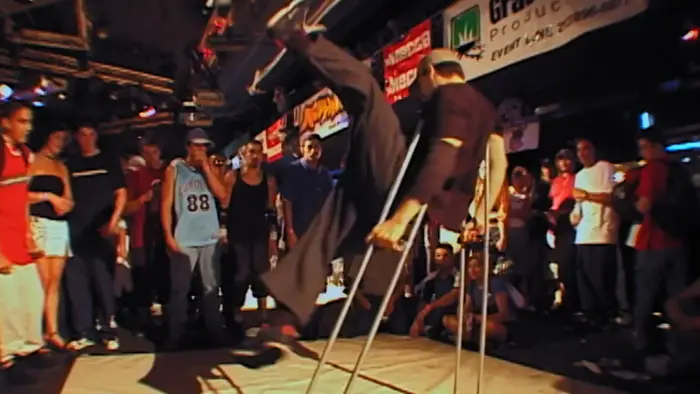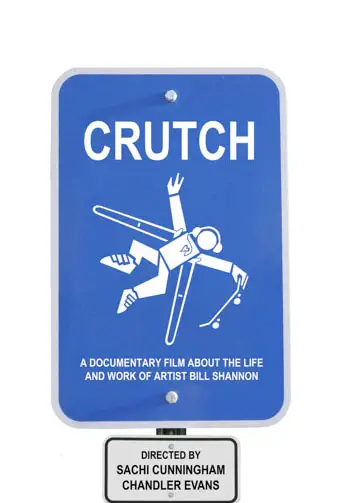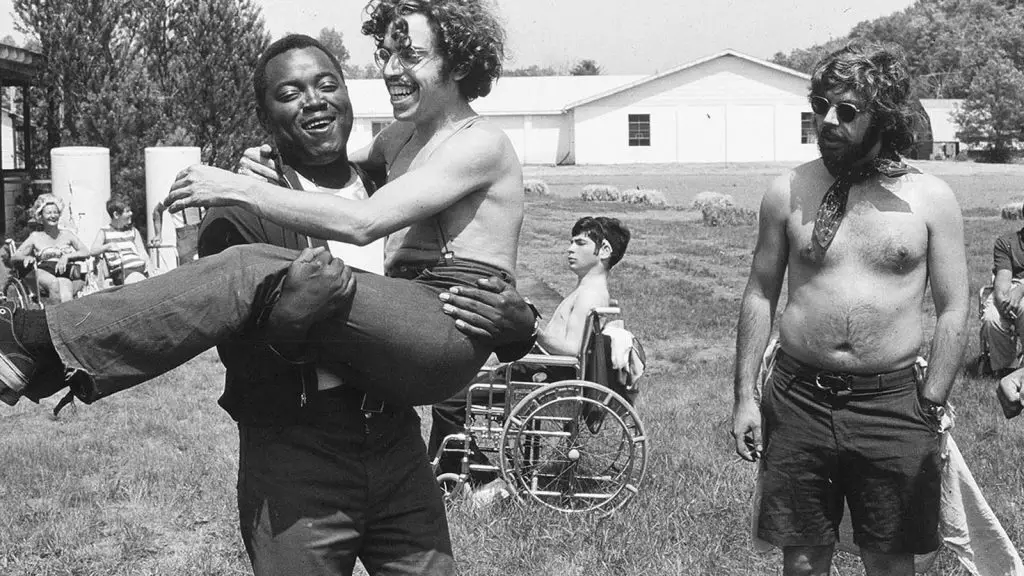
The documentary Crutch examines Pittsburgh street performer Bill Shannon’s career as a skate punk and breakdancer. Shannon was diagnosed in childhood with Legg-Calvé-Perthes disease, a degenerative hip condition that causes bone necrosis. It eventually caused him much pain and limited his mobility to such a degree that he required crutches. He wanted to continue dancing and skating and devised a style of locomotion and movement that incorporated both his skateboard and a pair of rounded crutches suited to his purposes.
The results are fantastic. Shannon created a new way of moving with fluid grace and style on his crutches and with his skateboard. Over time he became known for this style, at first in breakdance competitions and then later on in fine arts performances. He produced a show in 1999 called The Art of Weightlessness and another called Sketchy. He was hired to choreograph set pieces for Cirque du Soleil, showcasing his extraordinary style. Crutch shows how, by any measure, Bill Shannon overcame his disability and re-cast it as his greatest asset to become an international dance icon. This is truly an inspiring story of overcoming constraints to make yourself a new kind of presence in the world.

“Shannon created a new way of moving with a fluid grace and style on his crutches, and with his skateboard…”
His story doesn’t end here, however. The documentary spends only a short moment discussing why Shannon rejected hip replacement surgery, which would have dramatically reduced his pain, as well as preserve his mobility. The procedure is painted as some far-out fringe notion that isn’t practical and might need to be repeated. While it’s true that hip replacements may wear out, anyone who’s suffered through hip pain and had a replacement can tell you what a life-altering, positive experience it is. Relief is immediate. Yet, for some reason, Shannon refused.
He’s a person with a puzzling personality, as evidenced by his refusal of the surgery and street performance art. Shannon eventually revisited a relatively antisocial aspect of his punk roots and sought to expose the ways that people reacted to him, finding that he wanted to be not simply accepted and celebrated for his accomplishments, but he also needed to be understood on his terms. Failing that, he shined a light on strangers’ reactions to a disabled man. The disconnect with his approach is that he saw anyone who treated him as disabled as uninformed. After living in the context of his situation for decades, he has a certain vision of himself in mind that he’s evolved into and now expects complete strangers who’ve never dealt with him to somehow have the same level of sophistication. It’s absurd.
Shannon appears never to have gotten comfortable with how people respond to him. He was so upset about public responses to him that he began to categorize and label them. He grouped people’s reactions into broad classifications: ambiguity of disability, weight of empathy, projected narrative, and good samaritanism as obstacles.

"…good job of presenting Shannon, while avoiding canonizing him..."


